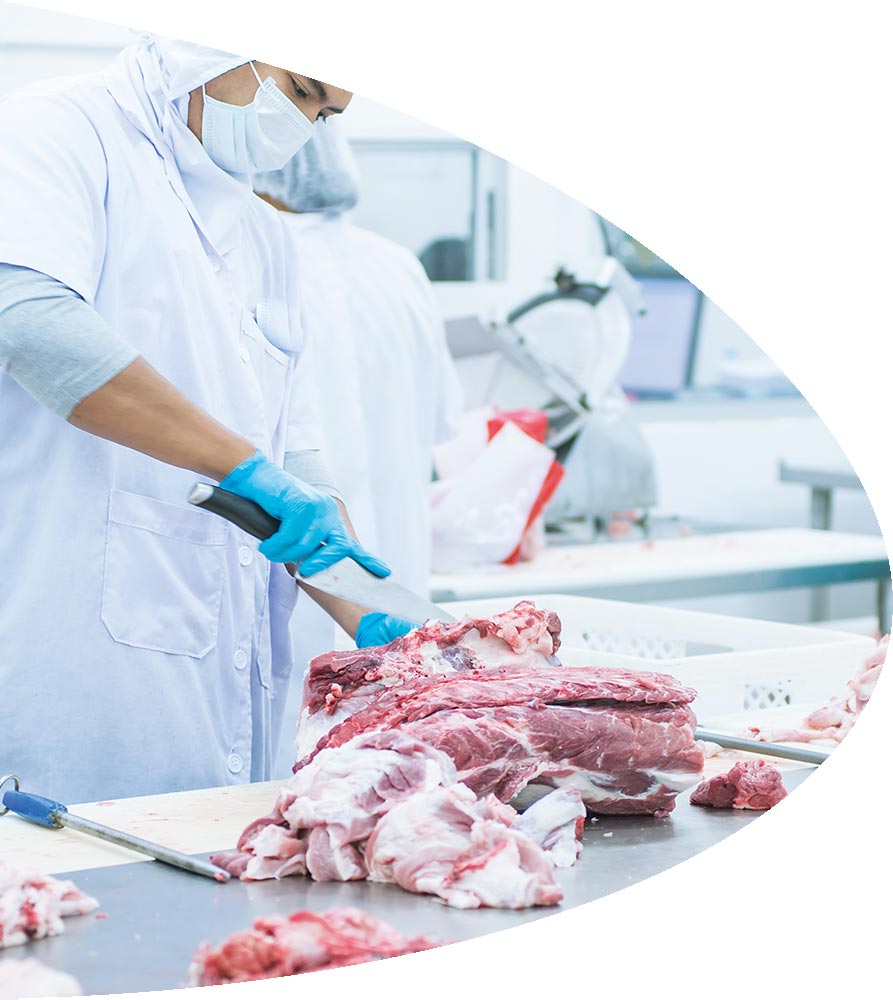In many countries, changing lifestyles (with increasing urbanisation, the growth in women’s employment and changing habits in terms of food service) and increased purchasing power are fuelling growth in the demand for industrially prepared meat products (ready-sliced meats, cooked meats, meat-based ready meals which may be very sophisticated, etc.), to the detriment of raw products. Often sold in supermarkets or delivered to restaurant chains, it has to be possible for these products to be prepared and consumed rapidly, and their shelf lives are being extended.
With the rise in industrial-scale preparation and processing of meat products comes the risk of the spread of disease-causing bacteria (including Listeria monocytogenes and Salmonella spp.) at every stage in the chain: in the abattoir, in storage, or during freezing (fast or slow), cutting, smoking, cooking, preparation of ready meals, packaging, shipping, and transport, etc. Consumers are increasingly well informed, and recalls of contaminated product batches (generally as a result of increasingly effective self-inspections), outbreaks of avian flu and scandals involving tainted meat all fuel their mistrust. Europe’s resistance to the US’ desire for it to accept exports of chlorine-washed chicken also illustrates the importance of the issue of residues in the food industry.
Faced with pressure from consumers, tougher regulation of the use of chemicals and the cost of product batch recalls, manufacturers in the meat sector need to implement faultless procedures for hygiene and disinfection and use these demands to communicate the safety of their products in a way that will reassure consumers.
The issues faced by manufacturers vary according to the business activity (abattoir, cutting, preparation of ready meals) and the soiling to be removed (proteins, fats, colourings, etc.). Kersia’s experts assist by tailoring cleaning and disinfection protocols to the specific features of production areas (how the plant is designed, the microbial environment, etc.). The breadth of Kersia’s range means it can fight the various forms of contamination, as well as diagnosing and tackling the development of biofilms, communities of micro-organisms that adhere to one another and to a surface via the secretion of an adhesive, protective matrix.
These programmes are fully integrated into the processing procedures and also generate added value, since the overall approach to defining performance goes beyond efficient cleaning and disinfection and includes optimising water and energy use, and simplifying protocols to save time and limit the consumption of cleaning products.
Case study 1
in Germany, a major chicken processor was experiencing a recurring issue of microbial contamination on a production chain conveyor. The plastic components in the conveyor ruled out disinfection with a product that could corrode this material. Kersia solved the problem with a programme of specific solutions based on a mix of products from its enzyme range and disinfectants for sensitive surfaces.
Case study 2
a French manufacturer of traditional sausages, with an extensive quality process and an in-house laboratory capable of performing microbiological testing, was confronted with the sudden appearance of yellow-orange stains on its products, which could not be sold as they were. Kersia’s experts identified the strains responsible for the contamination and provided solutions that the manufacturer used to adapt its microbiological control plan (covering air, surfaces and raw materials) and its disinfection plan. The contamination vanished and customer complaints associated with the cosmetic flaws of some sausages therefore ceased.

